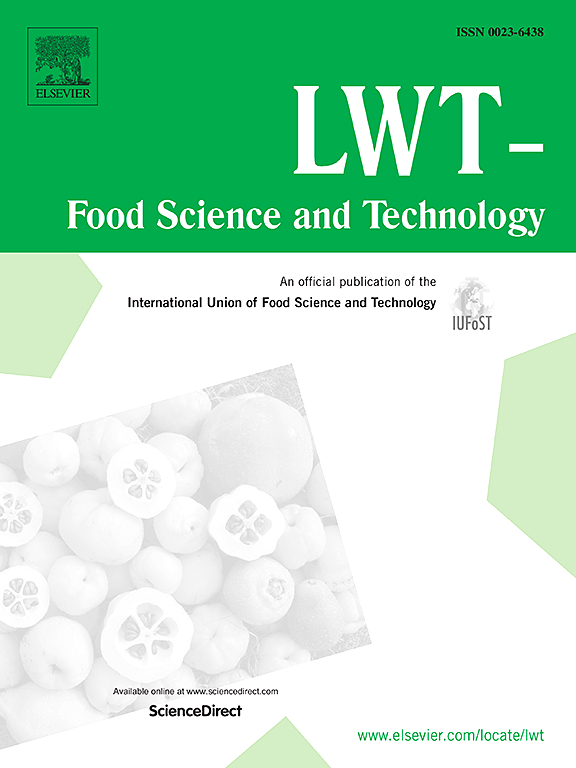Effect of phytochemicals from grape seed on the improvement of noodle quality and the structure of wheat gluten
IF 6
1区 农林科学
Q1 FOOD SCIENCE & TECHNOLOGY
引用次数: 0
Abstract
In this study, we investigated the effect of phytochemicals from grape seeds on the quality of noodles and the structural hierarchy of the gluten network. The results showed that proanthocyanidins (GSP) had the greatest effect on the color of the sheets, while gallic acid (GA) had the least impact. The cooking characteristics were most pronounced when we added GSP and GA, and the effects of all phytochemicals on the texture and tensile properties of the pasta were improved. Thermal characterization showed no change in gluten stability. Combining the results of free sulfhydryl content, protein secondary structure, and noncovalent interactions, the interactions between different phytochemicals were summarized. Specifically, GSP significantly enhanced the gluten via ionic bonding and disulfide g-g-g conformation, accompanied by a rise in α-helix. Meanwhile, catechins improved gluten mainly by enhancing hydrogen bonding, epigallocatechin gallate (EGCG) led to a significant increase in hydrophobic interactions (P < 0.05) with contributions from ionic and hydrogen bonding. Additionally, GA protein secondary structure similar to the control group, which was a result of disulfide bonding balanced with noncovalent interactions. The mechanism of interaction between the important phytochemicals and the noodles helps to better reveal the improvement effect of grape seed powder on noodles and provides a reference for the production application of grape seeds added to noodles.
求助全文
约1分钟内获得全文
求助全文
来源期刊

LWT - Food Science and Technology
工程技术-食品科技
CiteScore
11.80
自引率
6.70%
发文量
1724
审稿时长
65 days
期刊介绍:
LWT - Food Science and Technology is an international journal that publishes innovative papers in the fields of food chemistry, biochemistry, microbiology, technology and nutrition. The work described should be innovative either in the approach or in the methods used. The significance of the results either for the science community or for the food industry must also be specified. Contributions written in English are welcomed in the form of review articles, short reviews, research papers, and research notes. Papers featuring animal trials and cell cultures are outside the scope of the journal and will not be considered for publication.
文献相关原料
公司名称
产品信息
阿拉丁
Ethylenediaminetetraacetic Acid (EDTA)
阿拉丁
Glycine
阿拉丁
L-Cysteine
阿拉丁
Sodium Dodecyl Sulfate (SDS)
阿拉丁
Tris
阿拉丁
Urea
阿拉丁
NaCl
阿拉丁
Dinitrobenzoic Acid
阿拉丁
Ethylenediaminetetraacetic Acid (EDTA)
阿拉丁
Glycine
阿拉丁
L-Cysteine
阿拉丁
Sodium Dodecyl Sulfate (SDS)
阿拉丁
Tris
阿拉丁
Urea
阿拉丁
NaCl
 求助内容:
求助内容: 应助结果提醒方式:
应助结果提醒方式:


